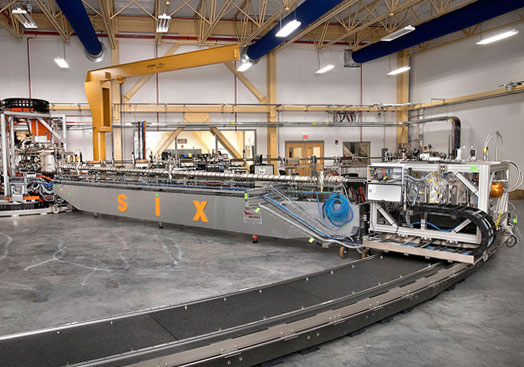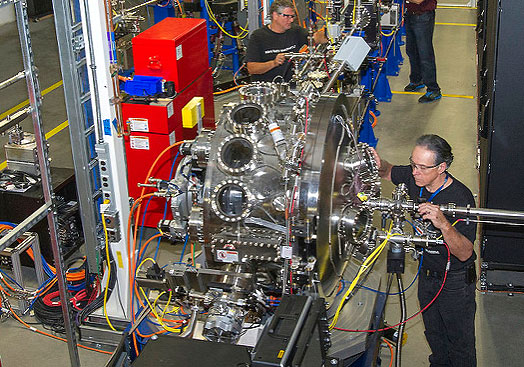
Understanding and controlling the physics of emergent phenomena and catalysis at the nanoscale
The Electronic Structure Techniques Program at Brookhaven Lab's National Synchrotron Light Source II (NSLS-II) offers cutting-edge capabilities for investigating and controlling the complex interplay of emergent phenomena and catalysis at the nanoscale. The program provides specialized scattering and spectroscopy tools in the infrared and soft x-ray energy range. These techniques can be combined with diverse experimental environments and operando conditions. The program's scientific focus is the characterization of electronic structures and behaviors in novel materials, including quantum devices and catalysts, under diverse and realistic conditions.
Program Beamlines
Soft Inelastic X-ray Scattering
The SIX beamline enables researchers to study electron correlation and structure in complex materials with ultrahigh energy resolution and sensitivity. Researchers use SIX to investigate high-temperature superconductors, topological insulators, and emergent phenomena in novel materials, and to understand the underlying physics of these materials and their potential applications in energy science.
Electron Spectro-Microscopy
The ESM beamlines offer two versatile experimental stations for spectroscopic and microscopic investigations of novel materials. Using ESM's high energy resolution, small spot size, and wide range of photon energies, researchers can uncover the fundamental physics and chemistry of newly synthesized materials and incredibly small crystals with high precision.
Frontier Synchrotron Infrared Spectroscopy
Researchers can use the FIS beamline to understand the structure and behavior of materials under extreme conditions. FIS offers researchers the possibility to mimic the temperature and pressure found deep inside of planets, and to investigate the properties and reactions of materials and condensed matter in these special environments using infrared electronic and vibrational spectroscopy.
Magnetospectroscopy, Ellipsometry and Time-resolved Optical Spectroscopies
The MET beamline is a dedicated and versatile spectroscopy tool for studies on condensed matter under diverse experimental conditions, including low temperatures and high magnetic fields. Using the beamline's advanced capabilities, researchers can study the electronic structures and emergent phenomena of novel materials, including multiferroics, topological insulators, and high-temperature and conventional superconductors.
Coherent Soft X-ray Scattering
The CSX beamline offers researchers state-of-the-art soft x-ray scattering and imaging tools with world- leading, coherent, and high photon flux for investigating the electronic texture and dynamics of composite materials. This unique combination of spectroscopic, microscopic, and imaging tools enables researchers to explore the correlation between electronic behavior and emergent phenomena in novel materials.
Infrared Near Field
The Infrared Near Field (INF) spectroscopy facility will provide for three different beamlines, each fed by its own 15 x 15 mrad swath of dipole bend radiation to span photon energies from the far-IR to visible. The first endstation will have a scanning near-field nanospectrometer for samples in ambient conditions. Spectral range will be for wavelengths from 5000 to 155 cm-1. The second endstation is planned to have a nanospectrometer system for cryogenic samples and possibly high magnetic fields. The third endstation is expected to start with a pair of infrared microscopes.
NanoARPES and NanoRIXS
The NanoARPES and NanoRIXS (ARI) beamline provides a comprehensive view of electronic structure, examining temperature, chemical, structural, magnetic, and atomic variations. It combines ARPES for band structure and RIXS for collective excitations with 100 nm resolution. Additional techniques, including XPS, XAS, fluorescence, and photoelectron diffraction, enable in situ mapping. ARI advances the understanding of next-generation quantum materials by revealing key electronic properties.
Electronic Structure News

Making Waves: RIXS Illuminates Elusive Carriers of Angular Momentum

Longstanding Model Fails to Explain Spin Dynamics in 1D Cuprates
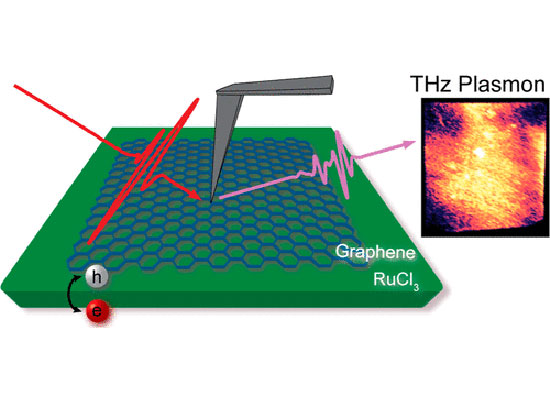
Studying Plasmonics in Graphene Cavities
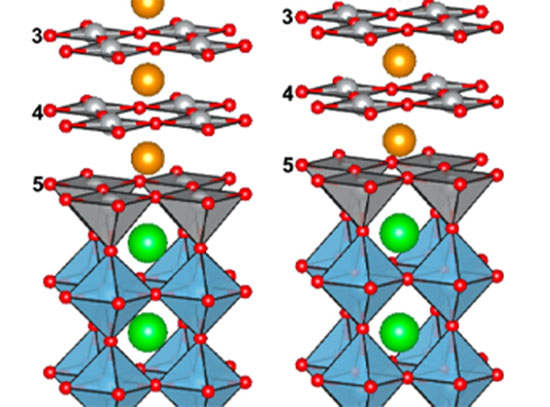
Peeling Back the Layers: Exploring Capping Effects on Nickelate Superconductivity
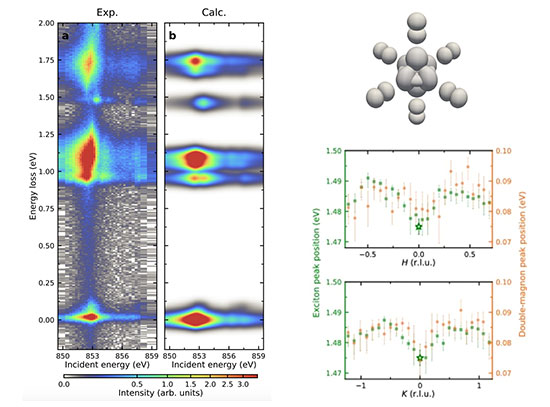
Studying Excitons in a Novel Magnetic Material
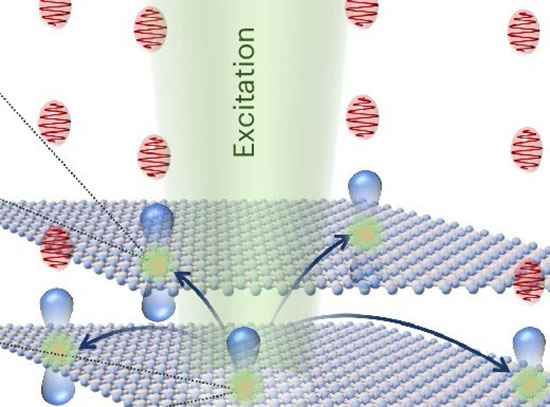
Decoding Imperfections in Hexagonal Boron Nitride for Quantum Applications
Our Partners

Synchrotron Earth and Environmental Science (SEES) is a
NSF-funding consortium whose mission is to advance research and education
in synchrotron-based Earth and environmental science to better understand
our planet from the atmosphere to the core. SEES support the XFM, XPD,
and FIS beamlines at NSLS-II.

NSLS-II partners with Yale University to operate and develop the ESM Molecular-beam epitaxy (MBE) capabilities.
NSLS-II partners with Brookhaven Lab's Center for Functional Nanomaterials (CFN) to develop and operate the ESM X-ray Photoemission Electron Microscopy (XPEEM) endstation.





